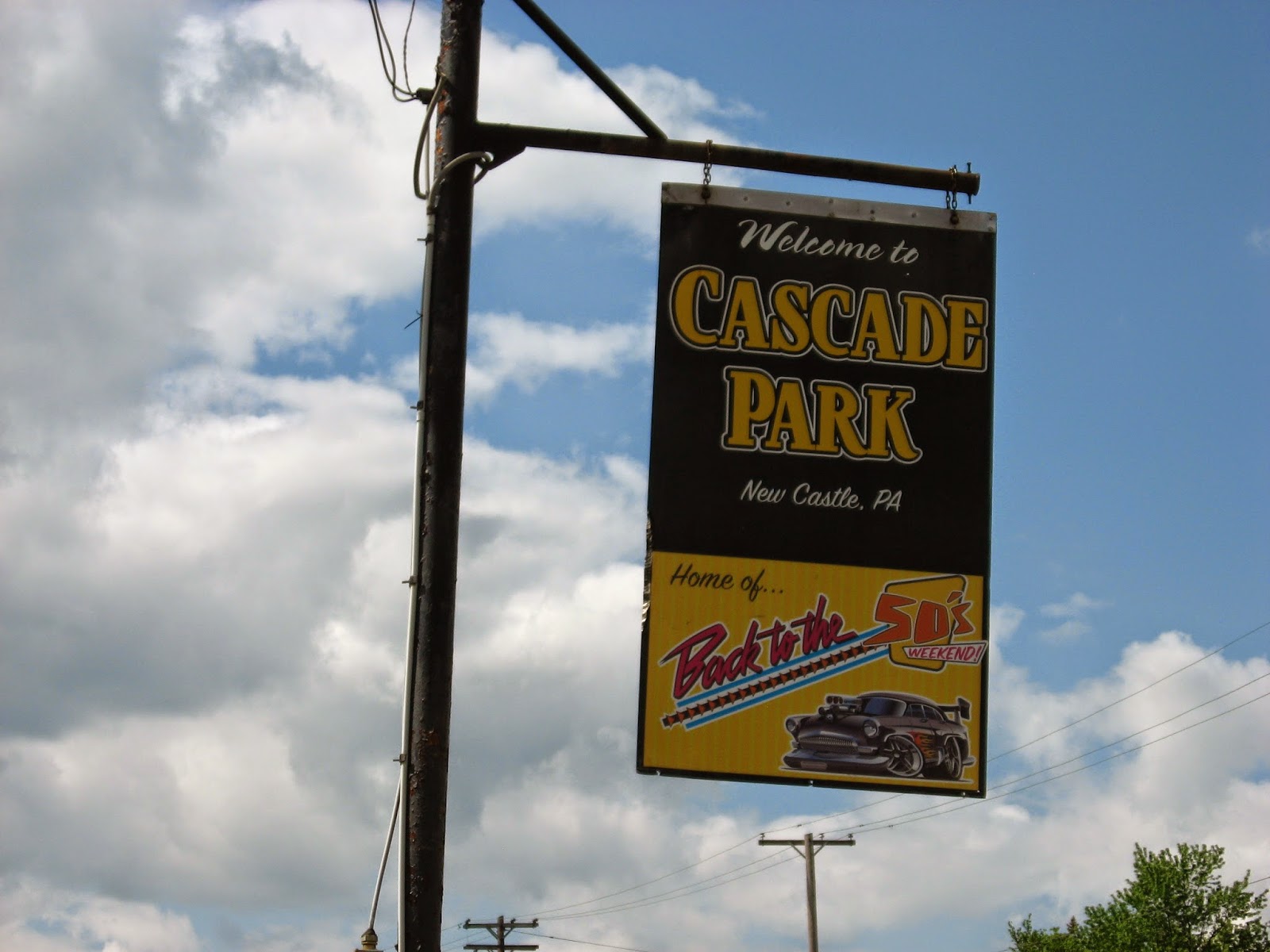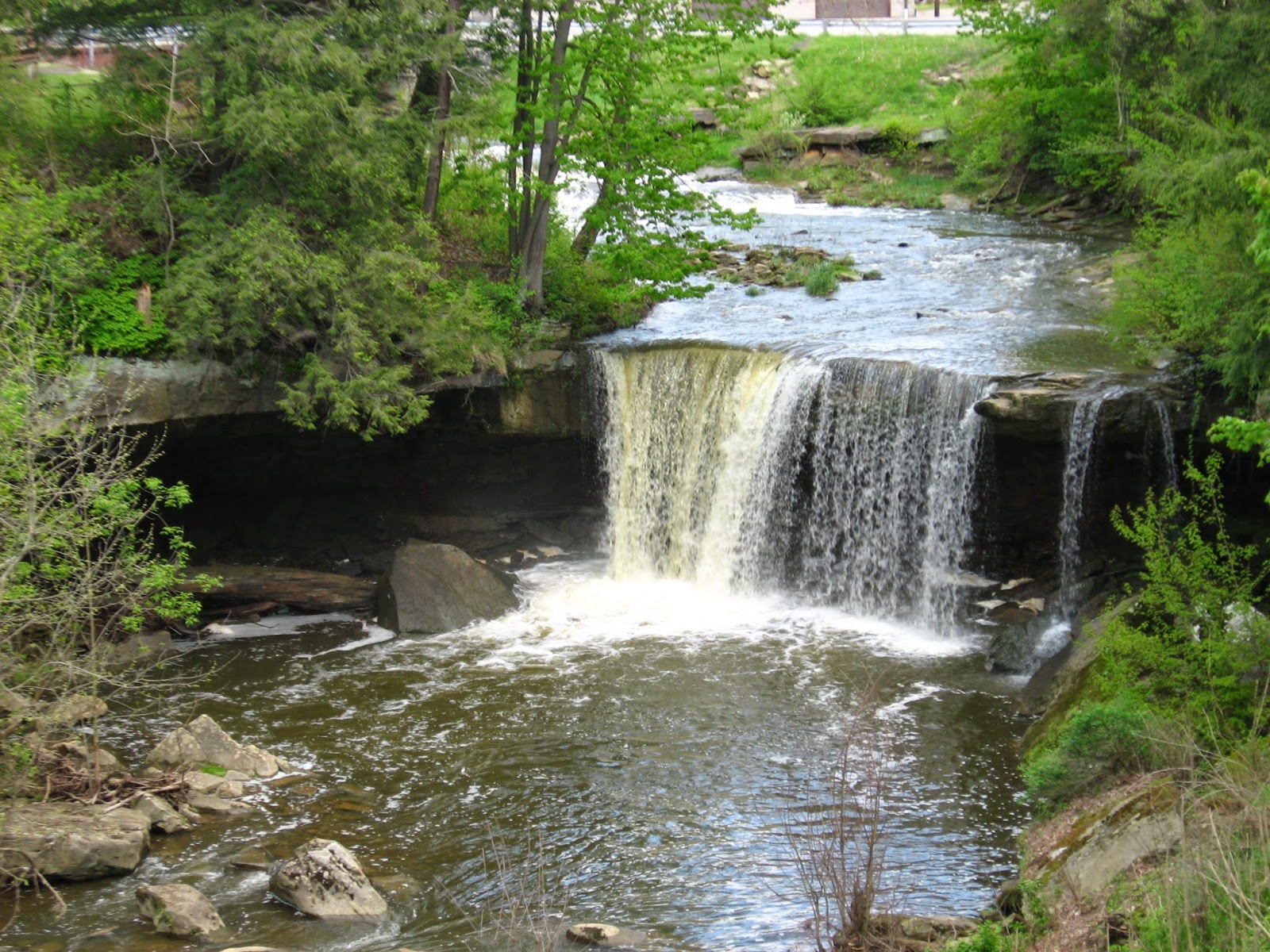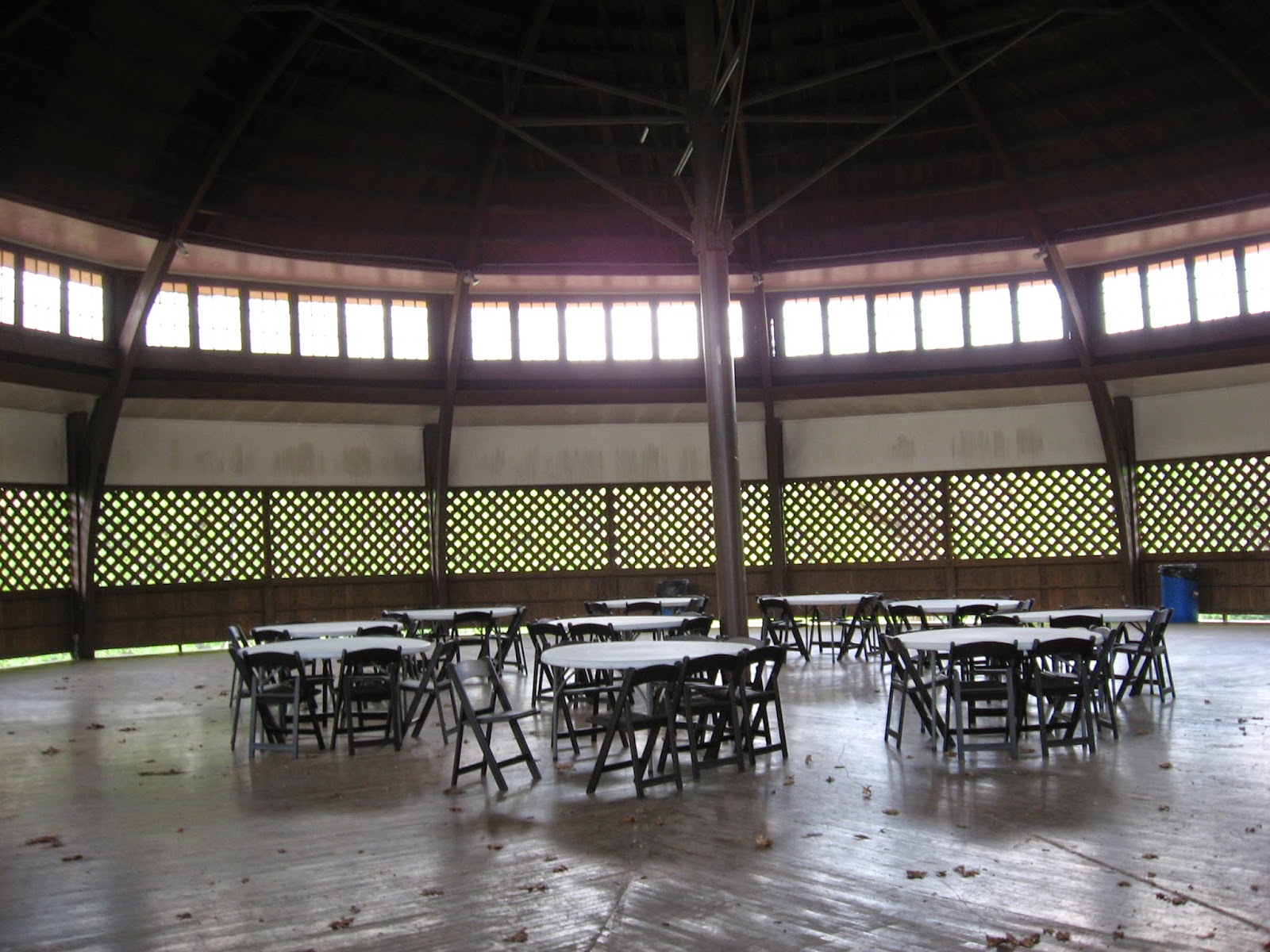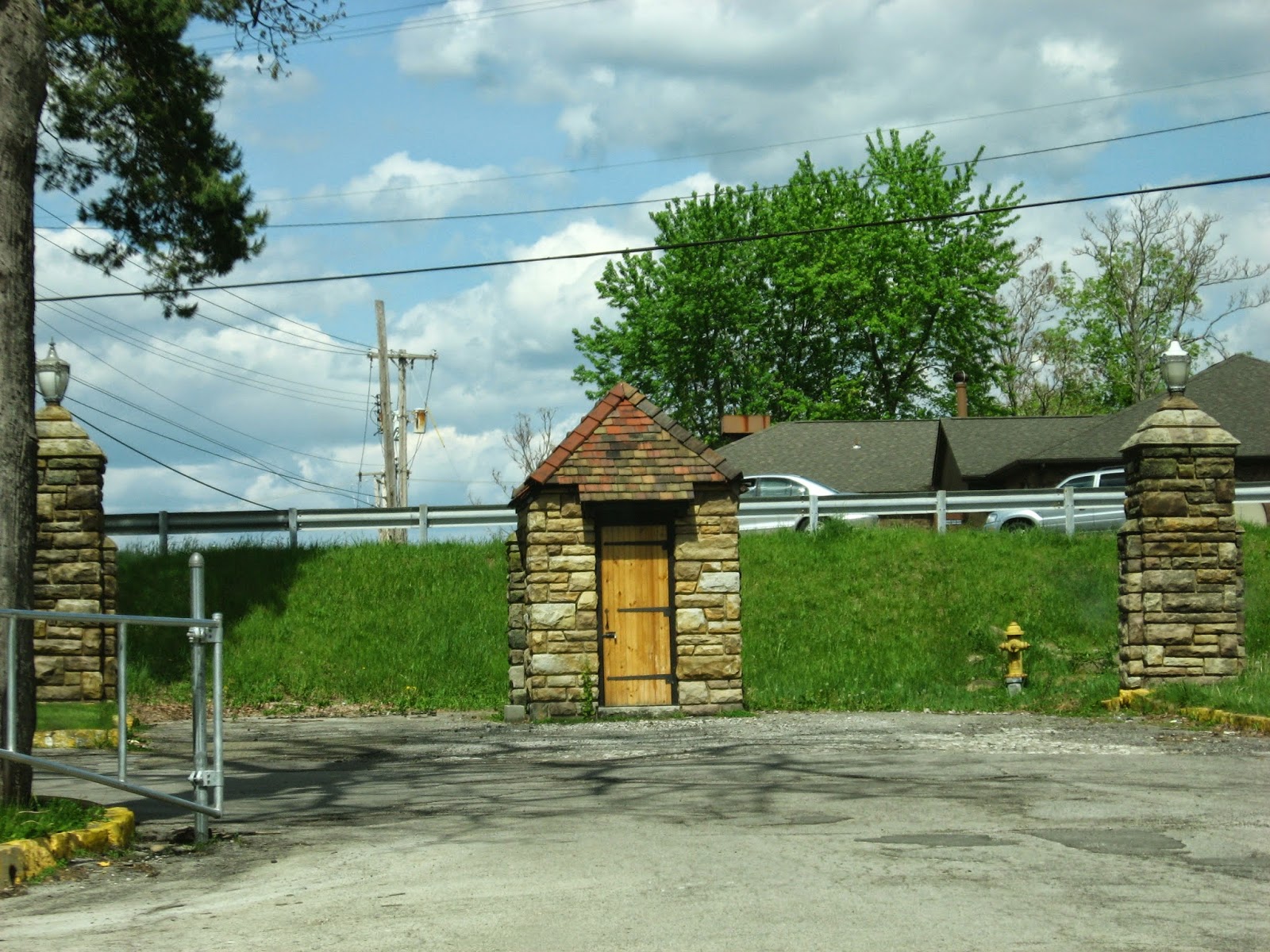Nowadays there is not much to see. A golf course is located on the entire site. This is the end of the road through the golf course. I did not take too many photos for there was not much to see. I read a comment on a page (not verifiable) that stated the only remnants from the park are located in this spot. A Ferris Wheel is supposed to have occupied this spot and a stairway/pathway is remaining. We did not get out of the car though because we were driving through the Golf Course Road and thought it would be best to move along.
This is the view from the road. It is pretty grown in, but the creek is located here.
Anyways, this park was not exactly lucky by any means. This is from a 1908 issue of Billboard Magazine, then based out of Cincinnati. Billboard served partly as a news source for park news in this time period.
From the Erie Daily Times:
"Erie today realized the extent of its calamity for the first time.
Yesterday the flood meant a magnificent spectacle for some; a hard search for
others; and for many, a gruesome search through the morgue for missing friends or
relatives.
Today it is the same to all. A loss of perhaps a dozen Erie citizens; damage estimates to be close to five million dollars; several hundred families homeless and a two-block section the entire length of the city, devastated.
The excitement of the flood and the attendant scene of wreckage now mean homes gone forever, after years of close saving had made them possible; business plants demolished after hard work had placed them among the most prosperous in the city; and a part of the beautiful city of Erie in ruins.
Today it is the same to all. A loss of perhaps a dozen Erie citizens; damage estimates to be close to five million dollars; several hundred families homeless and a two-block section the entire length of the city, devastated.
The excitement of the flood and the attendant scene of wreckage now mean homes gone forever, after years of close saving had made them possible; business plants demolished after hard work had placed them among the most prosperous in the city; and a part of the beautiful city of Erie in ruins.
“I could hear the rain and the roar of the rushing water; but it was dark. There was no
moon, so I could see nothing. When the morning came we hurriedly dressed and as soon as the
light broke we were eagerly looking for the creek. We saw with surprise and some fear that the
water filled all the valley above and, running across the road extended up to within a few feet of
our door-step.
Jacob Albrecht - Interview from John Miller's History of Erie County (no, not the Miller we are familiar with)
The park somehow plugged on through, without a coaster, until 1919 when a fire burnt the entire park down. The movement towards Prohibition was at full throttle at this point, and this park was a "wet" park, meaning it sold alcohol. Waldameer was a dry park at this point. Prohibitionists were known to go in and smash any booze serving establishment and sometimes even torch them. I have not found anything about what the cause of the fire was, but maybe the Prohibition movement had something to do with this. This is just pure conjecture though.
I will leave you off to some happier times for the park. The first photo is of the Ballroom, located on the Lake Erie shoreline and the second photo is of some folks fishing in Four Mile Creek.























































